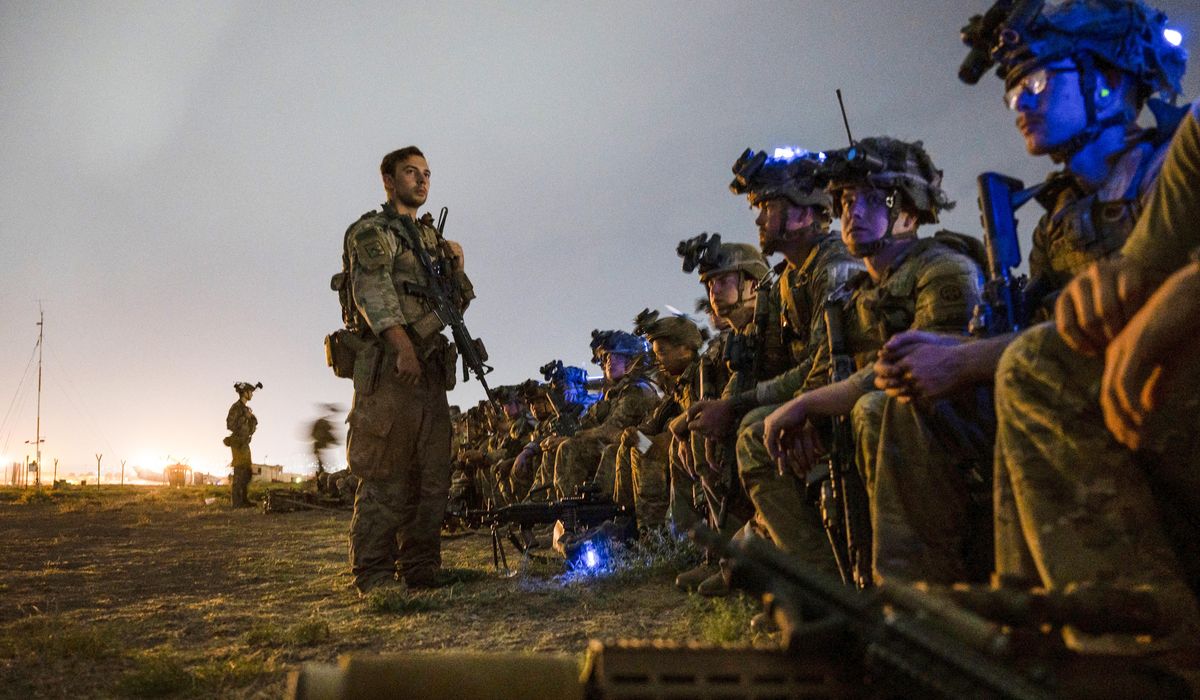

Members of Congress say they still can’t get clear answers about the U.S evacuation effort in Afghanistan, but they’re being asked to approve an additional $7 billion to manage the pipeline of people still coming and the tens of thousands of Afghans already here.
House Democrats announced the $7 billion item early Thursday as part of a stopgap spending bill to keep the government running past a Friday shutdown deadline, buying time for lawmakers to try to hash out a broader spending deal for fiscal year 2022.
The evacuee money, agreed to by top Republicans and Democrats, comes on top of $6.3 billion included in the last stopgap bill in late September, as the price tag for the chaotic withdrawal continues to rise.
<!– Temp removal of in article reco
End comment –>
Most of the new money — $4.3 billion — goes to the Defense Department, which ran the evacuation and the camps where the evacuees are being hosted until they can be processed and released.
The new stopgap bill is up for a vote in the House this week, though it might be days before Senate action.
The Administration for Children and Families, a Health Department agency that oversees refugee arrivals, would get nearly $1.3 billion. That money would be granted to organizations helping resettle the refugees and will cover housing, medical care, education and legal assistance.
Homeland Security, which is charged with vetting and admitting the evacuees, mostly through Secretary Alejandro Mayorkas’ power of parole, would get about $150 million.
The Centers for Disease Control and Prevention, which is administering vaccinations to the new arrivals, would get $8 million.
The State Department is in line for about $80 million.
RJ Hauman, government relations director for the Federation for American Immigration Reform, questioned why money was being poured into “importing random, unscreened, unvetted” Afghan migrants when America’s southern border remains a mess, yet hasn’t gotten any infusion of cash.
“We hope Senate Republicans use their leverage to ensure that a short-term funding bill is not used to provide billions in taxpayer dollars to make the American people less safe,” he said.
About 70,000 Afghans have been brought from their country to the U.S. under Operation Allies Welcome. The program was billed as a way to help Afghans who assisted the now-ended 20-year U.S. war effort.
But fewer than half of those evacuated are actually eligible for the special visa designed for such allies. Most of the evacuees were brought under Mr. Mayorkas’ unilateral powers of parole, giving them tentative legal permission to be in the U.S. and to get jobs.
Congress has approved giving them assistance similar to what a refugee would be eligible for — though the Afghans generally did not go through the same screening that a refugee would.
Afghans had their fingerprints and the names they used with U.S. authorities checked against American national security and law enforcement databases. If they weren’t flagged, they were admitted without needing to go through the in-person interview that other refugees face.
Yet some Afghans who should have been flagged overseas have reached the U.S., including a convicted rapist who had been deported once before. The Biden administration is now struggling with what to do with those cases, given that it currently is not deporting people to Afghanistan.
Critics, both Democrats and Republicans, say the evacuation effort ended up airlifting out people who likely didn’t need the help, while leaving behind many truly needy Afghans who couldn’t make it to the airport in Kabul before the U.S. pulled out.
Sen. Richard Blumenthal, Connecticut Democrat, chided Mr. Mayorkas at a hearing last month for the lack of answers about who was evacuated and who was left.
“Now we have this tremendous challenge ahead of us, and what I’ve seen about the evacuation effort is a lot of agencies pointing fingers at states, pointing fingers at DOD or DOD pointing fingers at DHS,” he said.
